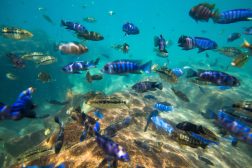Definition
noun, plural: macronuclei
The larger type of nucleus involved in non-reproductive functions (as opposed to the smaller micronucleus), and is a distinctive feature among ciliates since it only occurs in this group
Supplement
The ciliates are a group of protozoans that are known for their characteristic cilia, which are hair-like organelles as well as the presence of a macronucleus.1 A macronucleus is the larger nucleus in contrast to the smaller type of nucleus found in ciliates. The macronucleus is derived from the micronucleus by the process of DNA polytenisation.
The macronucleus is a polyploid in contrast to the micronucleus, which is diploid. The macronucleus contains multiple sets of chromosomes and in which the DNA is actively transcribed. It is involved in non-reproductive functions in cell metabolism and protein synthesis while the micronucleus is associated with reproduction.
The macronucleus undergoes direct division without mitosis (amitosis). It degenerates before conjugation, forming new macronucleus through karyogamy of the micronuclei.
Word origin: macro– (large) + nucleus
Synonym(s):
- meganucleus
Compare:
See also:
- Gametic nucleus
- ciliate
Reference(s):
1 Cavalier-Smith, T. (2000). Flagellate megaevolution: the basis for eukaryote diversification. In: Leadbeater, B.S.C., Green, J.C. (eds.). The Flagellates. Unity, diversity and evolution. London: Taylor and Francis, pp. 361-390, p. 362.







